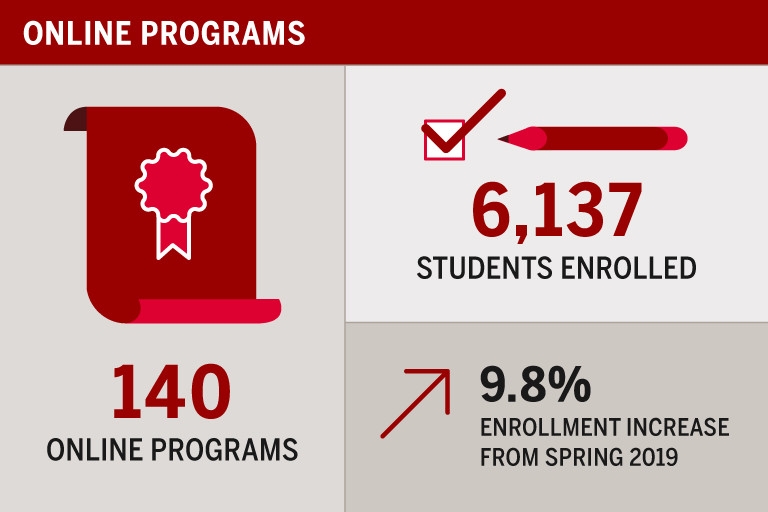“Students who aren’t treated as an afterthought are more likely to succeed.”
A colleague said that to me the other day. Seems obvious that this should be a truism, like “you miss 100 percent of the shots you don’t take” or “we need air to breathe.” Yet somehow, in much of higher education, the fact that online students and online courses shouldn’t be treated as an afterthought often counts as bold thinking.

Here’s the rub: Online education is most successful when universities don’t think of it as “online education.” It works best when it’s just “education” with a different distribution mechanism. Successful online education isn’t supposed to “compete” with traditional education; it should merely evolve to be more efficient and, ultimately, make learning faster and more accessible.
Unfortunately, that’s not always how it works – which could explain why online education hasn’t lived up to its promise. Nationally, 40 to 80 percent of students drop out of online courses. Dropping out of just one course is far from the worst outcome. Dropping out of a degree program entirely – or, worse yet, dropping out, then restarting, then dropping out again – can be an albatross around a student’s neck for decades. The process can take years, leaving learners with significant student debt without the increased earning potential a degree provides.
We’re long past the time when these results were acceptable. Online education has been around for more than two decades, so we don’t need more time to experiment. Nor do students need to get more comfortable with online education. Students have been comfortable with online learning for years – a generation of “digital natives” can learn through a screen. Increasingly, all students expect that online education will make up at least a portion of their coursework.
The problem is one of political will and prioritization. Many universities view online learners as distinct, walled off from the students attending the brick-and-mortar institution. Universities serve them with different instructors, different coursework, different supports and, worst of all, different standards.

They treat them as an afterthought.
Indiana University’s online programs, by contrast, were designed differently. We use the same faculty for online courses that we do for classes on campus. We use the same tactics, the same syllabus, the same pedagogy and the same coursework. Faculty hold online students to the same standards.
Yet for all of our good work, our refusal to make online learners an afterthought is just as much about altruism as it is about ensuring the future health of the university. If universities want to stay relevant to modern learners, or even just keep their doors open, they must put online education on equal footing with on-campus education. The market demands it. Learners are increasingly likely to be older than the 17- and 18-year-old freshmen we think of, with careers and responsibilities that make it impossible to go to campus full time.
Further, today’s “learners” – some might even call them “consumers” – expect a compelling, convenient online experience. The student accustomed to taking in the world through her smartphone – be it through social media, Netflix, or even just her email – won’t accept a knock-off digital experience for the most expensive item in her life, namely her education.
If a university is offering a subpar online education, she’ll go to the next university. And who can blame her? Let’s face it, we – college administrators, faculty and staff – would do the same; we expect our digital experiences to be frictionless, too.
Indiana University understands, then, that online education isn’t some convenient but nonessential appendage; online education is the heart and lungs. For many universities, it’s the only part of the institution that’s growing, with the potential to overtake on-campus education in the number of students it serves.
In many ways, higher education has been behind the curve for decades. In general, we were slow to adopt online education as an instructional format. When we did finally embrace it – after unscrupulous actors had sullied its reputation – we took even longer to make online education effective, even as the content volume and quality of streaming services like Amazon and iTunes were growing by leaps and bounds.
The results speak for themselves. As the number of people who drop out of college hit 2 million a year and student debt surpassed $1.6 trillion in the U.S., it is past time for major universities to accept responsibility for providing better outcomes by putting online learners on equal footing with traditional learners. In fact, there’s increasingly little difference between the two because they are the same person.
These students are not only the future of higher education, they are the present, as well. Treating them as an afterthought is not only wrong, it is also self-defeating. If universities won’t put online students on equal footing for the sake of the students they are supposed to serve, I hope they will at least do it for their own sake.
Chris J. Foley is associate vice president in the Office of the Executive Vice President for Academic Affairs and director of the Office of Online Education.

